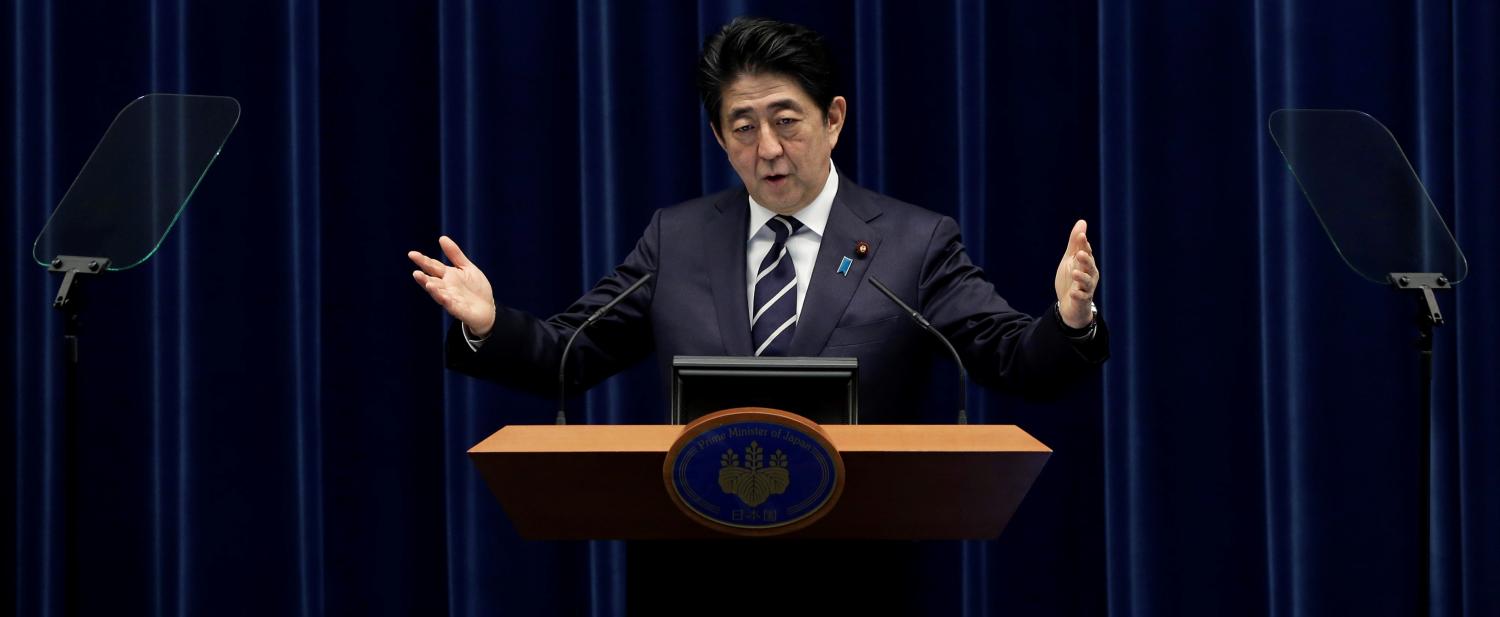In May this year, US President Barack Obama visited Hiroshima, the first serving president to do so. At the end of this month, on 26 and 27 December, Japan’s Prime Minister Abe will visit Pearl Harbor (though whether he is the first serving Japanese prime minister to do so is subject to some conjecture). Is the planned visit a simple return diplomatic gesture? Or is it part of a grander strategy on the part of Abe?
The view from Tokyo on global and regional affairs at the moment is perhaps best described as sitting on the edge of a game of go, a chess-like game where every move, every fuseki is watched with interest. ‘Fuseki’, the strategic placing of board pieces with a view to the longer picture, is a word often associated with political machinations in Japan be they domestic or international. Abe’s visit to Pearl Harbor is but another move among several he is making in his current term as prime minister.
Each one of Abe’s moves, his fuseki, is inevitably viewed through a strategic prism. Domestically, he juggles two distinct audiences: the hawkish one that supports his moves towards a stronger and more independent defence force, and a majority of the public who continue to resist changes to the constitution’s peace clause, Article 9. News of Abe's planned visit to Pearl Harbor, a highly contentious wartime theatre, was thus met with a range of responses.
His announcement made the visit sound as though it was added incidentally to a meeting he planned with the outgoing Obama ‘to review the last four years and look to strengthening the alliance relationship in the future’ (this was announced in the context of Abe being the first foreign leader to meet with Donald Trump post-election, whereupon Abe declared President-elect Trump was a ‘trustworthy person’).
He said the Pearl Harbor visit comes at a time when Obama's speech during his Hiroshima visit in May ‘of a nuclear-free world remains chiselled on the hearts of many Japanese people’. And, he added, ‘we must ensure such a tragedy does not happen again’. And therein lies Abe’s contradiction. Both leaders aspire to peace in their rhetoric, while neither seem willing or able to press those aspirations into reality. Abe’s astuteness in linking the Pearl Harbor visit to Obama’s Hiroshima visit aims to assert the ‘peace’ message in his ‘proactive pacifism’ while at the same time pressing for a stronger international role for the self-defence force.
Editorial comment in the major dailies ranged from the Tokyo Shimbun’s ‘opportunity to profile Japan’s status as a country of peace’ to the more conservative Yomiuri Shimbun’s hopes for some reconciliation of the history between Japan and America, notwithstanding the future of the TPP.
War and history is a long way from settled in Japan and the region, an issue at the heart of concerns over a potential remilitarising of Japan. Sankei Shimbun made a more explicit swing at reconciling wartime issues by controversially calling for PM Abe to revisit Yasukuni Shrine. It will be interesting to see if Abe, chiselling away at the rock of a pacifist nation, will move in this direction.
So to his larger strategy – where will Abe’s game pieces end up? Abe has already met with Donald Trump. In a few days, he will meet with Russian President Vladimir Putin. Japan and Russia continue to dispute territory to the north of Hokkaido, another residual dispute from World War II. But this one is personal with Abe, unusually, welcoming Putin to Abe’s home prefecture of Yamaguchi to set a less formal scene and engage with Putin on a ‘personal’ level. It will be Abe’s sixteenth meeting with Putin.
There is also news that Abe is due to head to Australia in January as part of a diplomatic tour that might be seen as shoring up ‘friends and allies’ in anticipation of their incoming Trump presidency. Cuddling a koala hasn’t ever been a bad political move either in the heat of an election campaign. The growing security ties between Japan and Australia will inevitably have a role in the new strategic environment in 2017.
Abe’s second term as prime minister is in stark contrast to his first, which lasted barely a year in 2006. Coming to the leadership for a second time in 2012, many observers have marvelled at the relative stability he has brought to the post, a stability that has earned him an unprecedented extension of his position by his party. There is a robust confidence which didn’t exist previously, a confidence which might easily spill over into hubris should his actions on the international stage continue to propel him towards his vision for Japan. Very little of this ‘international Abe’ is playing well for a domestic constituency awaiting the several arrows of Abenomics to find their targets.
Speculation is rife for general election early in 2017. Abe wants to finish off this game of go and then play on, as a master. Standing back, his moves have a particular purpose. Whether they take him to his much-wanted victory will require some time and observation for a little while longer. The game of go is one of patience.

